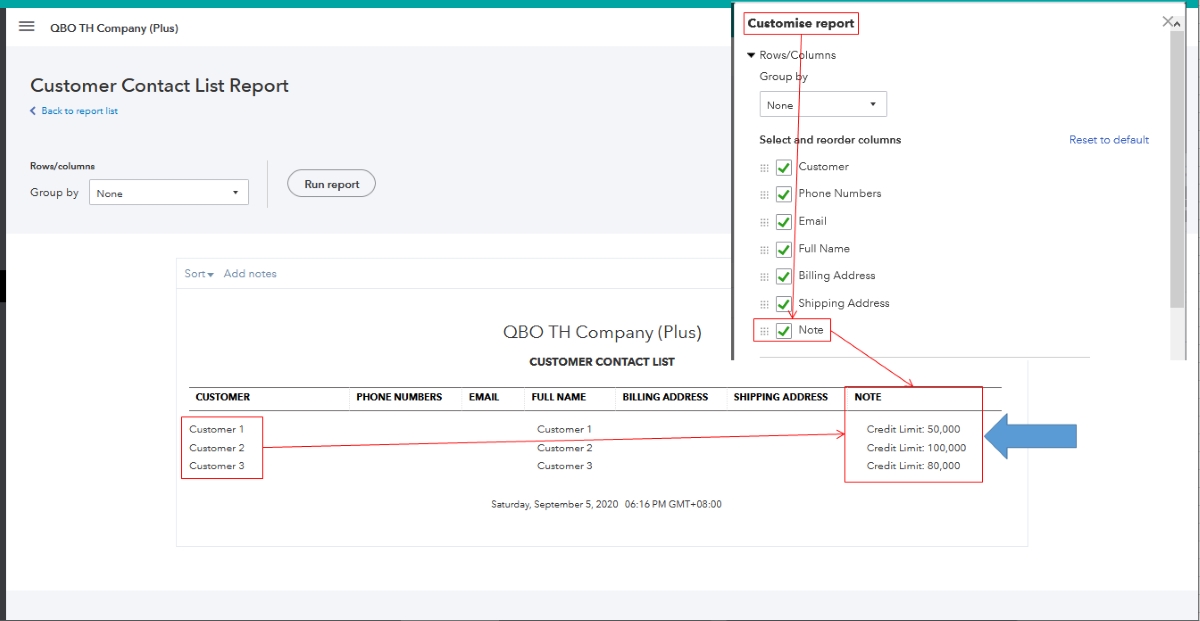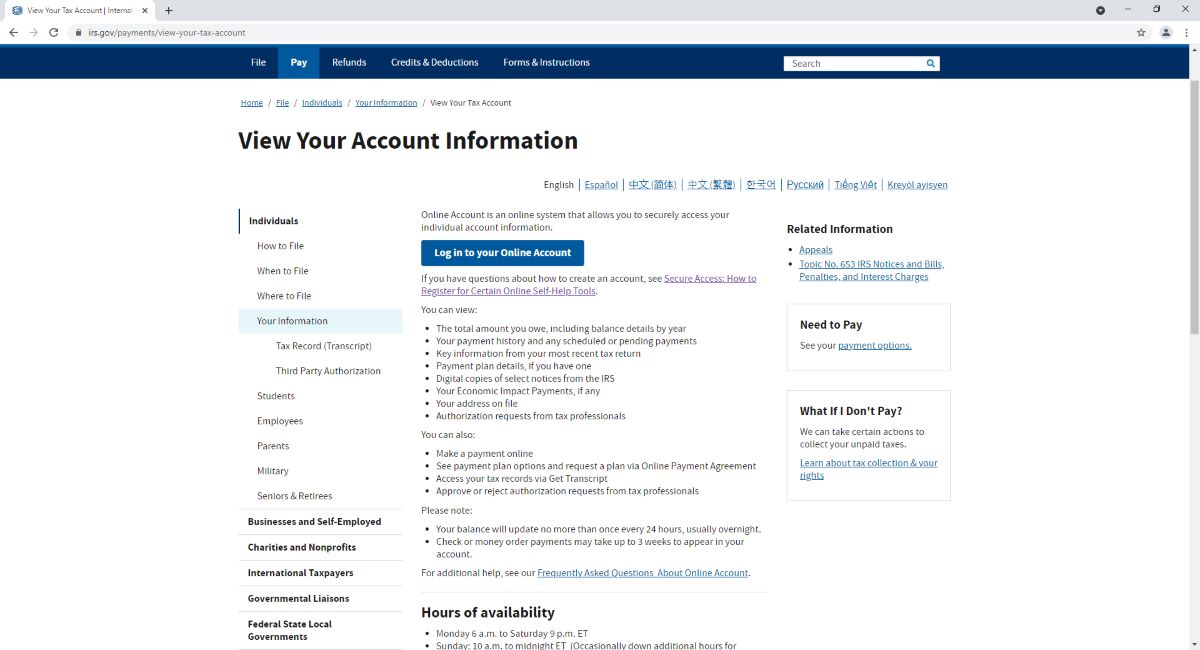

Finance
How To Set Up An Investment Company
Published: October 17, 2023
Learn how to set up your own investment company in the finance industry. Gain insights on legal requirements, capitalization, and strategic planning to launch your business successfully.
(Many of the links in this article redirect to a specific reviewed product. Your purchase of these products through affiliate links helps to generate commission for LiveWell, at no extra cost. Learn more)
Table of Contents
- Introduction
- Choosing a Legal Structure for Your Investment Company
- Registering Your Investment Company
- Setting Up an Investment Portfolio
- Establishing Investment Criteria
- Developing a Marketing and Networking Strategy
- Hiring Qualified Professionals
- Compliance and Regulatory Requirements
- Setting Up Accounting and Reporting Systems
- Managing Risks and Diversifying Investments
- Evaluating Performance and Making Adjustments
- Conclusion
Introduction
Welcome to the world of investment, where opportunities for financial growth and prosperity abound. If you are considering setting up your own investment company, this comprehensive guide will provide you with the necessary information to get started on the right foot. Whether you are a seasoned investor looking to expand your portfolio or a newcomer seeking to carve your niche in the finance industry, establishing an investment company can be a rewarding venture.
Before we dive into the intricacies of setting up an investment company, it is crucial to understand the basics. An investment company is a business entity that pools money from multiple investors to invest in various assets such as stocks, bonds, real estate, or other financial instruments. The primary objective of an investment company is to generate returns on investments for its shareholders while managing risk effectively.
Launching an investment company requires careful planning, thorough research, and adherence to legal and regulatory requirements. It also demands a deep understanding of financial markets, investment strategies, and risk management techniques. By following the steps outlined in this guide, you will gain valuable insights on how to set up and operate a successful investment company.
Throughout the rest of this article, we will cover different aspects of establishing an investment company. This includes choosing a legal structure, registering your company, setting up an investment portfolio, developing investment criteria, creating a marketing and networking strategy, hiring qualified professionals, complying with regulatory requirements, setting up accounting and reporting systems, managing risks, and evaluating performance. Each of these steps is vital to the success and sustainability of your investment business.
So, without further ado, let’s dive into the exciting journey of setting up your own investment company and learn how to navigate the ever-evolving landscape of the financial world.
Choosing a Legal Structure for Your Investment Company
When starting an investment company, one of the first decisions you need to make is choosing the right legal structure. The legal structure you select will determine how your company is organized, taxed, and governed. It is essential to choose a structure that aligns with your business goals, provides liability protection, and offers favorable tax treatment.
Here are a few common legal structures for investment companies:
- Sole Proprietorship: This is the simplest and most common form of business structure. As a sole proprietor, you have full control and ownership of the company. However, you will be personally liable for any debts or losses incurred by the business.
- Partnership: A partnership is when two or more individuals come together to run a business. There are different types of partnerships, including general partnerships and limited partnerships. In a general partnership, all partners share equal responsibility and liability. In a limited partnership, there are general partners who have more liability and limited partners who have less liability.
- Limited Liability Company (LLC): An LLC provides liability protection for its members while offering flexibility in management and taxation. It combines the benefits of a corporation and a partnership. As an LLC owner, you are not personally liable for the company’s debts or legal obligations.
- Corporation: A corporation is a separate legal entity from its owners. It provides the most significant liability protection but also involves more complex legal and financial requirements. Corporations issue shares of stock, allowing for easier transfer of ownership.
When deciding on a legal structure, consider factors such as personal liability, taxation, management structure, and the potential need to raise capital in the future. Consulting with a legal professional who specializes in business law can help you make an informed decision.
It’s important to note that different jurisdictions have specific rules and regulations regarding investment companies. Ensure that you comply with all legal requirements and obtain the necessary licenses and registrations to operate your investment company legally.
Choosing the right legal structure for your investment company is a crucial step in laying the foundation for your business. Take the time to carefully evaluate your options and seek professional advice to ensure you select the structure that best suits your needs and goals.
Registering Your Investment Company
Once you have chosen the legal structure for your investment company, the next step is to register your business. Registering your investment company is essential to establish its legal existence and ensure compliance with government regulations. The registration process may vary depending on your jurisdiction, but here are some general steps to follow:
- Name Registration: Choose a unique and catchy name for your investment company. Conduct a thorough search to ensure the name is not already taken by another company. Once you have a name, register it with the appropriate government agency or department.
- Obtain Necessary Licenses and Permits: Research and identify the licenses and permits required to operate an investment company in your jurisdiction. This may include securities licenses, investment advisor registrations, or other regulatory requirements. It is crucial to comply with these regulations to protect your investors and maintain the integrity of your business.
- Submit Required Documentation: Prepare and submit the necessary documents for registration. This typically includes articles of incorporation or organization, operating agreements, and any required disclosures or declarations. Consult with a legal professional to ensure you complete and submit the correct paperwork.
- Pay Registration Fees: Most jurisdictions require payment of registration fees to process your application. Be prepared to pay these fees and keep records of all transactions for future reference.
- Corporate Governance: Establish corporate governance practices for your investment company. This includes appointing directors, officers, and establishing bylaws or operating agreements. These practices will guide the decision-making process and ensure transparency and accountability within your company.
- Register with Regulatory Bodies: Depending on the nature of your investment activities, you may need to register with regulatory bodies such as the Securities and Exchange Commission (SEC) or the Financial Industry Regulatory Authority (FINRA). These registrations are crucial to operate legally and maintain credibility with investors.
It is vital to familiarize yourself with the specific registration requirements and deadlines in your jurisdiction. Non-compliance with registration procedures can result in penalties, fines, or even the forced closure of your investment company. Consult with a legal professional or a business registration service to navigate through the registration process smoothly.
Registering your investment company is a significant milestone that signals your commitment to running a legitimate and regulated business. Take the time to complete the registration process diligently and accurately, ensuring that you meet all legal and regulatory obligations set forth by the authorities.
Setting Up an Investment Portfolio
Creating a well-diversified investment portfolio is a fundamental step in setting up your investment company. An investment portfolio is a collection of different asset classes, such as stocks, bonds, real estate, commodities, and alternative investments. Diversification helps mitigate risks and increase the potential for returns.
Here are some key considerations for setting up your investment portfolio:
- Define Your Investment Objectives: Determine the goals of your investment company and the objectives you wish to achieve. Are you focused on long-term growth, income generation, or capital preservation? Understanding your investment objectives will guide your asset allocation and strategy.
- Assess Risk Tolerance: Consider the risk tolerance of your investors and align your investment strategy accordingly. Some investors may be more conservative, while others may be willing to take on higher risks for the potential of greater returns. Balancing risk and reward is essential.
- Research and Analyze Investment Opportunities: Conduct thorough research on different investment opportunities within your target market. Study market trends, analyze financial statements, and evaluate the performance of potential investments. Consider factors such as earnings growth, valuation, and industry dynamics.
- Diversify Your Holdings: Diversification is key to managing risk in an investment portfolio. Allocate your investments across different asset classes, geographic regions, industries, and investment strategies. This will help reduce exposure to the volatility of any single investment.
- Perform Due Diligence: Before making investment decisions, perform comprehensive due diligence. Evaluate the management team, conduct background checks, review legal and regulatory compliance, and assess the competitive landscape. Thorough due diligence will help you make informed investment choices.
- Monitor and Rebalance: Regularly monitor the performance of your investments and make necessary adjustments. Rebalance your portfolio periodically to maintain your desired asset allocation and align with market conditions. Stay informed about macroeconomic factors and industry trends that may impact your investments.
- Consider Professional Expertise: If you are not an experienced investor, it may be beneficial to seek the assistance of qualified professionals such as financial advisors or investment managers. They can provide insights and guidance to help optimize your investment portfolio.
Remember, every investment carries some degree of risk. It is crucial to conduct thorough research, stay informed about market conditions, and remain disciplined in your investment approach. Building a well-structured and diversified investment portfolio will set the foundation for your investment company’s success and attract potential investors.
Establishing Investment Criteria
Establishing clear and well-defined investment criteria is an essential step in the investment process for your company. Investment criteria outline the specific characteristics, requirements, and parameters that guide your investment decisions. By defining your investment criteria, you can ensure consistency, focus, and alignment with your investment objectives. Here are some key factors to consider when establishing your investment criteria:
- Target Market: Identify the target market or industry that aligns with your investment strategy. This could include sectors such as technology, healthcare, real estate, or specific geographic regions. Understanding the market dynamics and opportunities within your chosen niche is crucial.
- Investment Size: Determine the range of investment size that meets your company’s financial capabilities and objectives. This could be a minimum or maximum investment threshold. Establishing clear investment size criteria helps filter out opportunities that do not fit within your investment parameters.
- Return Expectations: Define the return expectations for your investments. This could be a specific desired rate of return or a target range. Consider factors such as risk tolerance, market conditions, and the specific investment strategy employed.
- Investment Duration: Determine the investment duration that aligns with your objectives. This could range from short-term investments with a quick turnaround to long-term investments with a more extended holding period. Consider factors such as liquidity needs and market cycles when establishing investment duration criteria.
- Risk Profile: Assess your risk tolerance and establish the level of risk that you are willing to undertake. This could translate into specific risk-return trade-offs or a preference for certain risk levels. Clearly defining your risk profile ensures that your investment decisions are in line with your risk appetite.
- Industry and Company Metrics: Define the specific industry and company metrics that meet your investment criteria. This could include factors such as revenue growth, profitability, competitive advantage, management quality, and market positioning. Conduct thorough research and analysis to identify the key metrics that drive investment success in your chosen market.
By establishing tangible and measurable investment criteria, you can streamline your investment process and effectively evaluate potential opportunities. This helps you focus on investments that align with your strategy and have a higher likelihood of meeting your objectives. Regularly review and refine your investment criteria to adapt to changing market conditions and investor expectations.
It is important to note that investment criteria may vary depending on your company’s unique goals, niche, and risk appetite. By clearly defining your investment criteria, you can ensure consistency, transparency, and informed decision-making throughout the investment process.
Developing a Marketing and Networking Strategy
Marketing and networking are crucial components of establishing and growing your investment company. A well-developed marketing and networking strategy can help raise awareness, attract potential investors, and build strong industry relationships. Here are some key steps to consider when developing your marketing and networking strategy:
- Identify Your Target Audience: Determine the specific demographic, geographic, and psychographic characteristics of your target audience. This could include individual investors, institutional investors, high net worth individuals, or specific industry professionals. Understanding your target audience will help tailor your marketing efforts effectively.
- Build a Strong Brand: Develop a compelling brand identity that conveys your company’s values, expertise, and unique selling points. Create a visually appealing and professional brand image, including a logo, website, and other marketing materials. Consistency in branding helps build trust and recognition in the competitive investment landscape.
- Create a Digital Presence: Establish a strong online presence through an informative and visually appealing website. Optimize your website for search engines to improve visibility and reach. Utilize social media platforms, blogs, and online forums to share valuable insights and engage with your target audience.
- Content Marketing: Develop a content marketing strategy to showcase your expertise and provide value to potential investors. Create high-quality and informative content such as blog posts, articles, whitepapers, or videos that address relevant investment topics. Share this content through your website, social media channels, and email newsletters.
- Attend Industry Events: Participate in industry conferences, seminars, and networking events to establish yourself as a thought leader and expand your network. Engage in meaningful conversations, exchange business cards, and follow up with potential investors or industry professionals. Networking plays a critical role in building trust and generating new opportunities.
- Cultivate Relationships: Develop and maintain relationships with existing investors, industry experts, professionals, and other stakeholders. Stay in touch regularly, provide updates, and offer valuable insights. Building strong relationships can lead to referrals and long-term partnerships.
- Utilize Referral Programs: Implement a referral program to incentivize existing investors and clients to refer new investors to your company. Offer rewards or benefits to those who successfully refer potential investors. A strong referral program can amplify your marketing efforts and attract qualified leads.
- Track and Analyze Results: Monitor and analyze the results of your marketing and networking efforts. Use analytics tools to measure website traffic, engagement, and conversion rates. Assess the effectiveness of different marketing channels and adjust your strategy accordingly. Continuously refine your approach based on data-driven insights.
Remember that building a strong marketing and networking strategy takes time and consistent effort. Be patient, persevere, and adapt as needed. As your investment company gains credibility and a track record, your marketing and networking efforts will become even more impactful.
Utilizing a combination of digital marketing, industry events, content marketing, and relationship building, you can establish your investment company as a trusted and reputable player in the market. A well-executed marketing and networking strategy can attract investors, build valuable relationships, and contribute to the long-term success of your investment company.
Hiring Qualified Professionals
Building a successful investment company requires a team of qualified professionals who possess the necessary expertise, skills, and experience to navigate the complexities of the financial industry. Hiring the right professionals is crucial to the growth and success of your company. Here are some key considerations when hiring qualified professionals for your investment team:
- Identify the Roles and Skills Needed: Assess the specific roles and skills required for your investment company. This may include portfolio managers, research analysts, compliance officers, operations specialists, and client relationship managers. Identify the qualifications, experience, and certifications necessary for each role.
- Advertise and Source Candidates: Advertise job openings through various channels, such as online job boards, industry publications, and professional networks. Utilize recruitment agencies or consider leveraging your network for referrals. Cast a wide net to attract a diverse pool of qualified candidates.
- Review Resumes and Conduct Interviews: Carefully review resumes and shortlist candidates who meet the desired qualifications and experience. Conduct thorough interviews to assess their knowledge, skills, and cultural fit within your company. Ask relevant questions to gauge their abilities and evaluate their fit for the role.
- Assess Industry Knowledge and Experience: Consider the candidates’ industry knowledge and experience in the specific areas relevant to your investment company. Look for candidates who demonstrate an understanding of investment strategies, financial markets, risk management, and regulatory compliance.
- Evaluate Communication and Interpersonal Skills: Strong communication and interpersonal skills are crucial for professionals in the investment industry. Assess candidates’ ability to articulate complex concepts, work effectively in a team, and build relationships with clients and stakeholders.
- Check References and Conduct Background Checks: Once you have identified potential candidates, contact their references to validate their qualifications and previous job performance. Conduct background checks to ensure their professional integrity and compliance with regulatory requirements.
- Consider Cultural Fit: Evaluate candidates’ alignment with your company’s values, ethics, and mission. Cultural fit is essential for building a cohesive and productive team. Look for individuals who share your company’s vision and can contribute positively to the company culture.
- Offer Competitive Compensation and Benefits: Develop competitive compensation packages to attract and retain top talent in the industry. Consider incentives such as performance bonuses, profit sharing, and opportunities for career growth. Providing comprehensive benefits and a positive work environment can also enhance employee satisfaction and retention.
Remember, hiring qualified professionals is not a one-time process but an ongoing endeavor. Continuously assess the talent needs of your company and invest in programs for professional development to nurture and retain your investment team. Foster a culture that promotes collaboration, continuous learning, and innovation.
Building a strong team of qualified professionals will give your investment company a competitive edge, enhance your investment capabilities, and instill confidence in your clients and investors. Hiring the right professionals is an investment in the long-term success of your company.
Compliance and Regulatory Requirements
In the financial industry, compliance with regulatory requirements is of utmost importance for investment companies. Adhering to these requirements helps ensure transparency, protect investors, and maintain the integrity of the market. Here are some key considerations when it comes to compliance and regulatory requirements:
- Know the Relevant Regulations: Familiarize yourself with the regulations that govern investment companies in your jurisdiction. Understand the rules and requirements set forth by regulatory bodies such as the Securities and Exchange Commission (SEC) or other local regulatory authorities. Stay updated with any changes or updates to these regulations.
- Register with Regulatory Bodies: Determine if your investment company needs to register with regulatory bodies based on your activities and the type of investments you offer. This may include registering as an investment advisor or complying with specific securities laws. Ensure that you complete all the necessary paperwork and obtain the required licenses and registrations.
- Implement Compliance Controls: Develop and implement compliance controls and procedures to ensure that your investment activities are conducted in adherence to regulations. This includes setting up internal policies, monitoring processes, and establishing reporting mechanisms. Regularly review and update your compliance controls to reflect any changes in regulations or industry best practices.
- Appoint a Compliance Officer: Designate a compliance officer within your investment company to oversee compliance efforts. This person should have a thorough understanding of regulatory requirements and be responsible for implementing and monitoring compliance procedures. The compliance officer should stay updated with any changes in regulations and communicate them to relevant stakeholders.
- Conduct Regular Audits: Perform regular internal audits to assess the effectiveness of your compliance controls and procedures. This helps identify any weaknesses or gaps in your compliance efforts. Consider engaging external auditors or compliance consultants to conduct independent audits for a comprehensive evaluation.
- Maintain Proper Record-Keeping: Establish a system for maintaining accurate and organized records of all investments, transactions, client interactions, and compliance efforts. These records may be required for regulatory filings, audits, or investor inquiries. Regularly review and update your record-keeping practices to ensure compliance and easy access to information.
- Training and Education: Provide ongoing training and education to your investment team on compliance requirements and best practices. Ensure that all employees are aware of their obligations and responsibilities regarding compliance. Stay informed about industry trends and developments in regulatory frameworks to enhance the knowledge and capabilities of your team.
- Engage Legal Counsel: Consult with legal counsel specializing in finance and regulatory compliance to ensure that your investment company remains compliant with all relevant laws and regulations. Legal experts can provide guidance on complex compliance matters and help navigate any legal challenges that may arise.
Compliance with regulatory requirements is not only a legal obligation but also a key element in building trust and credibility with investors and stakeholders. It is essential to prioritize compliance efforts and maintain a strong compliance culture within your investment company.
Remember, regulatory requirements may vary across jurisdictions, so it is essential to research and understand the specific regulations that apply to your investment company. Staying informed, proactive, and responsive to regulatory changes will help you navigate the regulatory landscape effectively and ensure the long-term success and sustainability of your investment company.
Setting Up Accounting and Reporting Systems
Establishing robust accounting and reporting systems is essential for the smooth operation and financial management of your investment company. Accurate and timely financial information is crucial for making informed business decisions and meeting regulatory requirements. Here are some key steps to consider when setting up accounting and reporting systems:
- Select an Accounting System: Choose an accounting software or system that suits the needs of your investment company. Look for a solution that can handle the complexities of investment accounting, including tracking investments, valuations, performance calculations, and fee calculations. Ensure that the software is compliant with regulatory reporting standards.
- Design Chart of Accounts: Develop a comprehensive chart of accounts that aligns with your investment company’s operations. This chart will organize and categorize your financial transactions, enabling accurate reporting and analysis. Customize your chart of accounts to include specific accounts for investments, expenses, fees, and income sources.
- Implement Accrual Accounting: Apply the accrual accounting method to recognize revenue and expenses when they are incurred, rather than when cash is received or paid. Accrual accounting provides a more accurate representation of your investment company’s financial position.
- Establish Financial Reporting Processes: Implement clear and standardized processes for financial reporting. This includes regular preparation of financial statements such as balance sheets, income statements, and cash flow statements. These reports will provide insights into the financial health of your company and assist in decision-making.
- Monitor Performance Metrics: Identify key performance indicators (KPIs) for your investment company and establish a system for tracking and analyzing these metrics. This could include metrics such as net asset value (NAV), rate of return, fund performance, and expense ratios. Regularly review these metrics to evaluate the success and profitability of your investments.
- Maintain Audit Trail: Implement stringent record-keeping practices to maintain an audit trail of financial transactions. Document all investment activities, including trade confirmations, investment documents, client agreements, and other relevant records. This will facilitate audits, regulatory compliance, and investor inquiries.
- Comply with Regulatory Reporting: Familiarize yourself with the regulatory reporting requirements for your investment company. Determine the reporting deadlines and formats mandated by regulatory authorities. Develop processes to ensure compliance with these requirements and submit accurate and timely reports.
- Engage with Professional Accountants: Consider hiring or consulting with professional accountants who specialize in investment accounting. They can provide guidance on complex accounting standards, regulatory compliance, and financial reporting. Engaging professional accountants ensures accuracy and adherence to accounting principles.
- Regularly Review and Analyze Financial Data: Regularly assess your financial data and reports to gain insights into your investment company’s performance. Analyze trends, identify areas for improvement, and make informed decisions based on the financial information available.
Setting up robust accounting and reporting systems in your investment company is essential to maintain financial transparency, facilitate accurate decision-making, and comply with regulatory requirements. Take the time to establish these systems properly to lay a solid foundation for your company’s financial management.
Remember to stay updated with accounting standards, regulatory changes, and best practices in investment accounting. Continuously evaluate and enhance your systems for improved efficiency, accuracy, and compliance.
Managing Risks and Diversifying Investments
Managing risks and diversifying investments are crucial aspects of running a successful investment company. Effective risk management helps protect capital, minimize losses, and enhance long-term returns. Diversification reduces exposure to individual investment risks and increases the potential for overall portfolio stability and growth.
Here are some key considerations for managing risks and diversifying investments:
- Understand and Assess Risks: Gain a comprehensive understanding of the various types of risks inherent in investment activities. These may include market risk, liquidity risk, credit risk, operational risk, and regulatory risk. Assess the potential impact of each risk on your investments and develop strategies to mitigate them.
- Establish Risk Management Policies: Develop risk management policies and procedures that outline your approach to identifying, measuring, and managing risks. Set risk tolerance levels and implement controls to monitor and manage risk exposures. Regularly review and update these policies to reflect changes in market conditions and regulatory requirements.
- Diversify Asset Classes: Allocate investments across different asset classes to spread risks. This includes diversifying investments in stocks, bonds, real estate, commodities, and alternative investments. Diversification helps reduce the impact of poor performance in any single investment and allows for potential gains from multiple sources.
- Consider Geographic Diversification: Expand your investments beyond just one geographic region. Investing in different countries or regions can provide exposure to different economic cycles, political environments, and market opportunities. This helps mitigate the risk of adverse events in a specific country or region impacting your entire portfolio.
- Implement Investment Allocation Strategy: Adopt a disciplined approach to allocate investments based on your investment objectives and risk tolerance. This may involve strategic allocation, tactical asset allocation, or other investment strategies. Regularly review and rebalance your portfolio to maintain the desired asset allocation.
- Monitor and Analyze Portfolio Performance: Continuously monitor the performance of your investment portfolio to identify any underperforming assets or sectors. Stay updated with market trends, economic indicators, and industry news. Regularly assess the risk-reward profile of your investments and make adjustments as necessary.
- Utilize Risk Management Tools and Instruments: Consider using risk management tools and financial derivatives to hedge against specific risks. This may include options, futures, or insurance products. Engage with professionals who specialize in risk management to guide you in selecting and employing these instruments effectively.
- Conduct Due Diligence: Perform thorough due diligence on potential investments to assess their risk profiles. Analyze financial statements, perform valuations, evaluate management quality, and review legal and regulatory compliance. Incorporate risk analysis as a critical component of your investment decision-making process.
- Stay Informed and Invest in Research: Continuously invest in market research, analysis, and access to quality investment information. Stay updated with industry trends, economic indicators, and regulatory changes. This helps you make well-informed investment decisions and adapt to changing market conditions.
Remember that while diversification can reduce risk, it does not guarantee profits or protect against all losses. It is essential to strike a balance between risk and potential returns based on your investment objectives and risk tolerance.
By diligently managing risks and diversifying your investments, you can create a resilient investment portfolio that helps weather market volatility and maximize long-term returns. Regularly review and evaluate your risk management strategies to ensure they remain aligned with your investment objectives and the evolving market landscape.
Evaluating Performance and Making Adjustments
Evaluating the performance of your investment portfolio is essential to gauge the success of your investment company and make informed decisions. Regularly assessing performance allows you to identify strengths, weaknesses, and areas for improvement. Making necessary adjustments based on these evaluations helps optimize returns and adapt to changing market conditions. Here are some key steps to consider when evaluating performance and making adjustments:
- Establish Performance Metrics: Define key performance metrics that align with your investment objectives. This may include metrics such as return on investment (ROI), compound annual growth rate (CAGR), risk-adjusted returns, and benchmarks. Establish clear benchmarks to compare your portfolio’s performance against relevant market indices or industry standards.
- Regularly Review and Analyze: Conduct periodic reviews and analysis of your investment portfolio’s performance. This could be done on a monthly, quarterly, or annual basis, depending on your company’s requirements. Analyze both quantitative and qualitative factors to gain a comprehensive understanding of your investments’ performance.
- Compare Actual Performance with Goals: Compare the actual performance of your portfolio with the goals and targets you have set. Evaluate whether your investments are meeting your expected returns, risk tolerance, and other objectives. Identify any gaps or areas where adjustments may be necessary.
- Analyze Attribution and Contribution: Assess the individual contributions of different investments or asset classes to your overall portfolio performance. Understand the drivers of performance, including the impact of specific investments or market trends. This analysis helps identify areas of strength or weakness within your portfolio.
- Consider Risk-Adjusted Returns: Evaluate the risk-adjusted returns of your investments. This takes into account the level of risk assumed to achieve those returns. Use risk-adjusted metrics such as the Sharpe ratio or the Sortino ratio to assess how efficiently your investments generate returns relative to the level of risk taken.
- Identify Underperforming Investments: Identify investments that are consistently underperforming or failing to meet your expectations. Conduct a deeper analysis to understand the reasons for underperformance. Determine whether adjustments can be made to improve the performance or if it is necessary to divest from such investments.
- Rebalance the Portfolio: Regularly review and rebalance your investment portfolio. Assess whether the allocation of assets is still in line with your desired asset allocation strategy. Adjust the weighting of investments to maintain the desired risk-reward profile and align with changes in economic or market conditions.
- Stay Informed and Adapt: Continue to stay informed about market trends, economic indicators, and industry developments. Take proactive measures to adapt your investment strategy and portfolio composition based on new information. Embrace a flexible approach that allows for timely adjustments to capture emerging opportunities or mitigate risks.
- Seek Professional Advice, if needed: Consider engaging the expertise of financial advisors or investment professionals. They can provide valuable insights, analysis, and guidance based on their experience and market expertise. Professional advice can help validate your evaluations and provide additional perspective on potential adjustments.
Regularly evaluating the performance of your investment portfolio and making adjustments as needed are key elements of proactive portfolio management. By being diligent, adaptable, and informed, you can optimize returns, mitigate risks, and position your investment company for long-term success.
Remember, investment performance is influenced by numerous factors, some of which are beyond your control. Focus on continuous improvement, remain disciplined in your investment approach, and always prioritize the best interests of your clients and stakeholders.
Conclusion
Setting up and running an investment company is an exciting and challenging journey that requires careful planning, strong financial knowledge, and adherence to regulatory requirements. Throughout this comprehensive guide, we have covered various crucial aspects of establishing an investment company.
We started by discussing the importance of choosing the right legal structure for your company and the significance of registering your business to ensure compliance with government regulations. We then explored the process of setting up an investment portfolio, including the establishment of investment criteria and the development of a marketing and networking strategy to attract potential investors.
We emphasized the critical role of hiring qualified professionals who possess the necessary expertise and skills to navigate the complexities of the financial industry. Additionally, we highlighted the significance of compliance with regulatory requirements to maintain transparency, protect investors, and uphold the integrity of your business.
Furthermore, we delved into setting up robust accounting and reporting systems, managing risks, and diversifying investments to optimize returns and mitigate potential losses. Lastly, we discussed the importance of regularly evaluating performance, making necessary adjustments, and staying informed to adapt to market dynamics and achieve long-term success.
As an investment company, your success depends on a combination of factors such as a comprehensive understanding of the financial landscape, strategic decision-making, effective risk management, and a commitment to ethical and compliant practices.
Throughout your journey, it is important to continue learning, staying updated with industry trends, and adapting to the ever-changing market conditions. Engage with professionals, seek advice when needed, and invest in the development of your team to ensure sustainable growth and the achievement of your investment objectives.
Remember, the world of investments offers vast opportunities, but it also comes with inherent risks. By implementing the strategies and considerations outlined in this guide, you can lay a strong foundation for your investment company and increase your chances of long-term success in the dynamic and rewarding field of finance.














